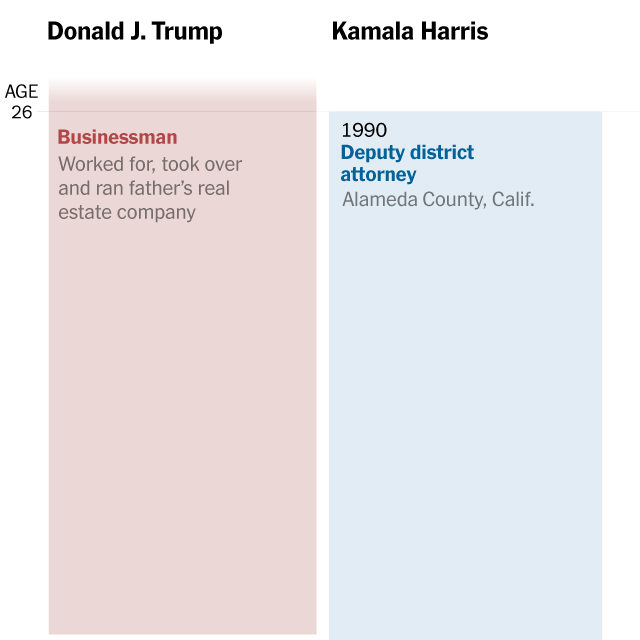Supported by
What to Know About the Democratic National Convention
Vice President Kamala Harris and her running mate, Gov. Tim Walz of Minnesota, will be the stars in Chicago.

The Democratic National Convention is almost upon us, following the Republican convention last month. Once it’s over, it will be a 75-day sprint to Election Day.
Here is what to know about the convention.
When is the Democratic National Convention?
The convention will run from Monday, Aug. 19, through Thursday, Aug. 22.
Where is it?
It will be held at two venues in Chicago: The United Center, an arena on the city’s West Side, will host evening events — that is, the prime-time programming and speeches intended for public consumption. McCormick Place, which is downtown near Lake Michigan, will host daytime events, largely official party business and meetings.
Who will be there?
Vice President Kamala Harris and her running mate, Gov. Tim Walz of Minnesota, will be the stars, and President Biden is expected to speak as well. But the full list and schedule of the speakers has not yet been released, and Ms. Harris’s campaign and the Democratic National Convention committee have declined so far to confirm any names besides Ms. Harris and Mr. Walz.
Republicans, during their convention, didn’t publicize their speaking schedule until close to the start of each night’s programming.
Typically, though, conventions feature a wide array of prominent people within the party, such as governors, members of Congress and former elected officials. Spouses of the nominees and other family members often speak or make appearances. And Americans who aren’t famous generally get some stage time as well, speaking about personal experiences that touch the themes and policies the nominee wants to emphasize.
For example, at the 2020 Democratic National Convention, Kristin Urquiza gave a widely publicized speech in which she blamed then-President Donald J. Trump for her father’s death from Covid. At this year’s Republican National Convention, Michael Morin spoke critically of the Biden administration’s immigration policies after his sister, Rachel Morin, was killed while jogging last year; an undocumented immigrant was arrested in the case.
How does it all work?
Normally, the convention would include a roll-call vote to formally select the nominees for president and vice president. Not this time. Ms. Harris and Mr. Walz were officially nominated through an early roll-call vote held online.
That means the main activity at this year’s convention will be twofold: the speeches and confirming of the party platform.
The speeches are what you’ll see on television in the prime-time hours, and they will be the public face of the convention, making the case for the Harris-Walz ticket and denouncing the Trump-Vance ticket. But during the daytime hours, delegates will finalize and adopt a platform — which has already been drafted — describing what the Democratic Party stands for.
Is Kamala Harris already the nominee?
Yes. It’s unusual, but the Democratic National Committee decided to hold a virtual roll-call vote in early August in order to avoid potential legal headaches about ballots in Ohio.
What about Walz? Is he made official at the convention?
His nomination is already official, too. The party stipulated that whomever its presidential nominee chose as a running mate would be the vice-presidential nominee, so no separate vote was required for Mr. Walz once Ms. Harris selected him. The Democratic National Committee certified both of their nominations earlier this month.
How often will Harris and Walz appear?
That’s not known.
Mr. Trump made an appearance every day at the Republican National Convention last month, but that isn’t the norm. Typically, the vice-presidential nominee is the keynote speaker on the third night of the convention and the presidential nominee is the keynote speaker on the last night of the convention. It’s not unusual for those to be their only major appearances.
Will there be protests?
Yes. The number of protesters at the Republican convention in Milwaukee was smaller than many expected, but larger crowds are expected for the Democratic convention.
The largest protests will most likely take place on the first and last days of the convention, though several others have been announced. An umbrella group of organizations on the left, the Coalition to March on the D.N.C., organized marches on both of those days, largely focused on opposing Israel’s war in Gaza and many Democrats’ support of it.
Protesters have been fighting with Chicago officials over where they will be allowed to march. The activists are seeking a longer route that they say will better accommodate the tens of thousands of people they hope will attend. A federal judge is overseeing the dispute but has not yet made a decision.
Nicholas Bogel-Burroughs, Bob Chiarito and Mitch Smith contributed reporting.
An earlier version of this article misspelled the given name of a speaker at the 2020 Democratic National Convention. She is Kristin Urquiza, not Kristen.
How we handle corrections
Maggie Astor covers politics for The New York Times, focusing on breaking news, policies, campaigns and how underrepresented or marginalized groups are affected by political systems. More about Maggie Astor
Advertisement





